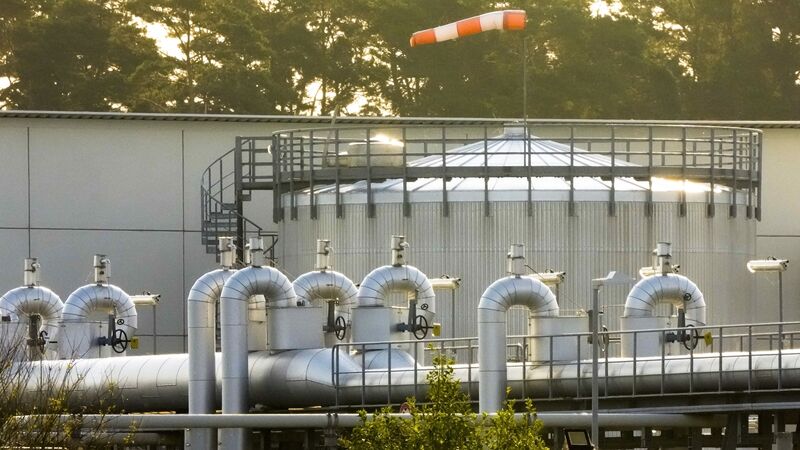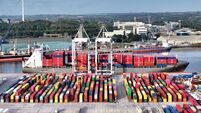Winter wholesale gas prices fall back again to levels of early summer

Gas storage across the continent is about 92% full.
Wholesale gas prices in Europe have fallen again, lowering prices to levels of early June before the shut-down by Russia of its supplies to the European Union along the Nord Stream 1 pipeline.
Gas storage across the continent is about 92% full as the EU prepares for the winter helped by a strong level of liquefied natural gas, or LNG.
“Gas prices have continued to fall across the continent as strong levels of storage and the glut of LNG have outweighed a potential increase in demand from China due to an expected increase in reserve capacity,” analysts at Alfa Energy said in a research note.
However, replenishing stocks next year will be difficult without normal volumes of Russian gas.
Prices of continental gas for November fell 6% on Tuesday to €218 per megawatt hour and matched levels of early June. That compares with €427 this time a month ago.
Price of wholesale gas for delivery in March also fell in the session and over recent months but remains at the still-elevated level of €386 per megawatt hour.
The prices of both continental gas and British gas play a big part in setting the prices that power generators across Ireland pay for their supplies.
British wholesale gas prices climbed from about £55.65 per megawatt hour in early July to a peak of £187.36 in late August, before falling back to £61.45 per megawatt hour at the end of the quarter, as European gas storage sites filled up, EnAppSys said, citing Spectron National Balancing Point prices.
EnAppSys also said that Britain’s gas-fired power generation levels soared to meet high export demands from continental Europe last quarter, even with surging gas and electricity prices.
Generation costs were more favourable in Britain than in continental Europe, allowing the UK to maintain the net exporter status it gained in the second quarter.
Interconnectors exported power to France, Norway, Belgium, and the Netherlands.
European demand for power was strong because of higher gas prices, poor availability in the French nuclear power stations and a continent-wide drought, which affects river cooling at reactors.
However, “strong warmth” is expected in southwest Europe and into the central part of the continent in the coming days, forecaster Maxar said in a report. That trend is set to continue for much of the region over the next two weeks.













